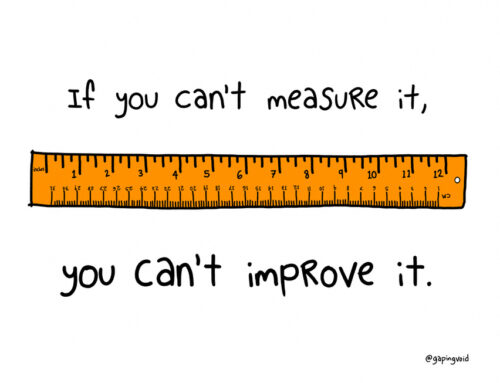Limit Extrinsic Reinforcement
April 26, 2016
Categories: Change
This post is Part 2 in a 2-part blog series on reinforcement and change. (If you missed Part 1, you can find it here.)
When you are making a change effort, it is important to think about reinforcement. Reinforcement is a fancy word that refers to something that makes a behavior more likely to continue in the future. So, for example, when I was in college, I was given an assignment to train a rat to press a bar. Every time my rat pressed the bar, I pressed a button, which gave a couple drops of sugar water to the rat. The sugar water was the reinforcement. The rat liked the sugar water, and so the reinforcement made it more likely that the rat would continue to press the bar in the future.
Think about something you are working on right now. I’m guessing you might have tried to implement some form of reinforcement. For example, you might tell yourself that if you go jogging three times this week, you will treat yourself to go watch a movie on the weekend. Giving kids an allowance is a type of reinforcement. When I was growing up, if I did all my chores during the week, I would get my allowance at the end of the week. The money made me more likely to do my chores.
Not all reinforcement is created equal. It is important to understand the difference between intrinsic and extrinsic reinforcement. Intrinsic reinforcement is created by the activity itself. Back to the jogging example, the benefits you receive from jogging would be intrinsic reinforcement. You might get a release of endorphins and feel happier. Or you might lose weight and notice that your clothes fit better. You might not struggle to walk up the stairs to your apartment. These are benefits you receive from doing the activity itself—they are intrinsic to the behavior.
Extrinsic reinforcement, on the other hand, is not associated with the activity itself—it comes from outside the activity. Treating yourself to a movie at the end of the week is extrinsic reinforcement—it is completely separate from the jogging activity. Giving allowance is another example of extrinsic reinforcement—the money given isn’t an inherent benefit of doing the chores themselves.
In general, intrinsic reinforcement is more effective than extrinsic reinforcement in helping to change behavior. I think there are a couple of reasons why this is the case. First, intrinsic reinforcement is more closely connected with the activity itself. There’s a clearer link between the behavior and the benefit that comes from the behavior. We can feel the connection in our mind and body, and it’s not easily broken. Extrinsic reinforcement is different. We know there’s not a real connection between jogging and going to the movies—we can go to the movies anytime we want. So the reinforcement is less likely to work to transform us into consistent joggers.
A second reason that intrinsic reinforcement is more effective than extrinsic reinforcement is that when we receive a lot of extrinsic reinforcement for something, our minds begin to think that we are doing the activity because of the reinforcement—not because the activity is enjoyable in and of itself. Psychologists have done research studies in which they bring participants into the lab and randomly assign them into two groups. Both groups complete the same task, but one group is paid a small amount (such as $1) and the other group is paid a large amount (such as $20). The participants that were paid $1 report that the task is more enjoyable than the participants that were paid $20. The large extrinsic reinforcement for the $20 folks robbed them of the inherent enjoyment of the task.
So what does this mean for us when we engage in a change effort, whether it is exercise, eating healthy, spending more time with our kids, or quitting a bad habit? You’re probably better off focusing on the intrinsic reasons why the change is good for you. What are the benefits that you receive that are inherent to the behavior itself? If you need some sort of external reinforcement or reward to get yourself going, that’s okay, but don’t make it too big. Make your external reinforcement small, just enough to get yourself over the hump. When you can, try to shift your focus from the external reinforcement to the intrinsic benefits.
Discussion: When making a change effort, do you focus more on intrinsic reinforcement or extrinsic reinforcement? Which type of reinforcement have you found to be most effective when making a change in your life?
Related Thoughts

Subscribe To My Newsletter
Join my mailing list to receive the latest blog posts.
Receive my e-book “The Mental Health Toolkit” for free when you subscribe.





